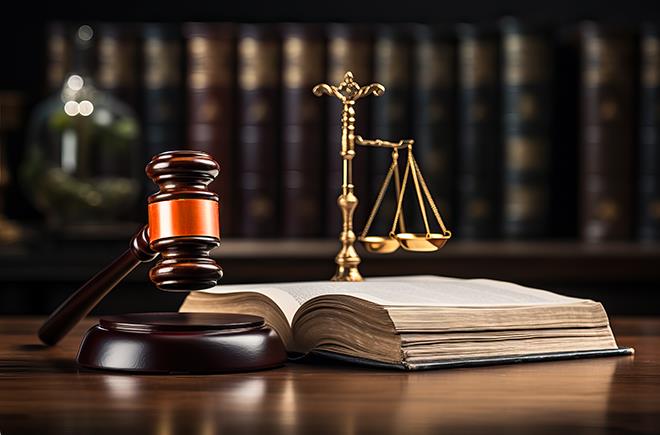Nuclear Verdicts in Construction Litigation: Defense Strategies to Mitigate Risk, Notable Verdicts and Lessons Learned

Course Details
- smart_display Format
On-Demand
- signal_cellular_alt Difficulty Level
Intermediate
- work Practice Area
Real Property - Transactions
- event Date
Tuesday, July 8, 2025
- schedule Time
1:00 p.m. ET./10:00 a.m. PT
- timer Program Length
90 minutes
-
This 90-minute webinar is eligible in most states for 1.5 CLE credits.
This CLE webinar will examine the risk of nuclear verdicts in the construction industry, address challenges for defense attorneys, and discuss lessons that can be learned from notable verdicts against construction companies. The expert panel will offer defense strategies to mitigate risk of nuclear verdicts—from developing the defense theory of the case, to voir dire and motion practice, to the selection and use of expert witnesses in trial.
Description
Nuclear verdicts, awards exceeding $10 million, are now commonplace and heavily impact the construction industry nationwide. With claims arising from workplace accidents, design errors and omissions, and construction defect claims, significant jury awards can result.
Examples of nuclear verdicts in the construction industry include: (1) a jury verdict of $74 million resulting from an improperly paved road in Kentucky; (2) a New York construction worker's fall resulting in a $102 million verdict; and (3) an $860 million verdict resulting from the death of a Texas woman killed by a crane crash.
There are a number of reasons for the increase in nuclear verdicts including the legal strategy known as the reptile theory in which plaintiffs' attorneys tap into the primal instincts of jurors by appealing to fears that construction companies seek profits over safety. Social inflation also plays a significant role when social pressures such as financial hardship and unemployment cause jurors to lash out and punish companies in response to their own fears.
Counsel for construction clients should understand the risk of nuclear verdicts and strategies to mitigate risk through the litigation process beginning with motion practice and voir dire and continuing through the trial.
Listen as our expert panel of litigators discusses the rise of nuclear verdicts in the construction industry and challenges facing defense counsel. The panel will also examine defense strategies and offer best practices for mitigating the risk of such verdicts.
Outline
I. The rise in nuclear verdicts
A. Introduction
B. What is a nuclear verdict?
C. Historical examples
D. Notable nuclear verdicts against construction companies
E. Verdicts trending higher and settlement value inflation
II. Types of construction claims prone to nuclear verdicts
A. Workplace injuries
B. Catastrophic property damages
C. Design and construction defect cases, including building collapse or failure
D. Consequential damages due to construction delays
E. Why the construction industry is vulnerable to nuclear verdicts
F. Impacts on the construction industry
III. Legal limitations on nuclear verdicts
A. Damage limitation statutes, affidavits of merit, frivolous litigation statutes, and common law abusive litigation claims
B. Prerequisites to recovery of punitive damages
C. Constitutional limits
D. Tort reform
IV. Defending against nuclear verdicts
A. Challenges for defense attorneys: reptile theory, distrust of corporations, social inflation, litigation funding
B. Pre-trial strategies: defense theories, pleadings, dispositive motions, motions to exclude evidence, stipulations and partial settlements, mediations, high and low agreements, mock trials, and voir dire
V. Best practices to mitigate risk of nuclear verdicts
A. Planning and inspections
B. Labor and improvement of hiring practices, training, and safety
C. Recordkeeping
D. Crafting clear and enforceable contracts
E. Risk transfer and insurance
F. Avoiding juries
Benefits
The panel will review these and other key considerations:
- What has been the impact of nuclear verdicts on the construction industry? What are challenges for defense counsel?
- What are notable nuclear verdicts against companies in the construction industry and what lessons can be learned by counsel and their clients?
- What defense strategies may be utilized to help mitigate the risk of a nuclear verdict?
Unlimited access to premium CLE courses:
- Annual access
- Available live and on-demand
- Best for attorneys and legal professionals
Unlimited access to premium CPE courses.:
- Annual access
- Available live and on-demand
- Best for CPAs and tax professionals
Unlimited access to premium CLE, CPE, Professional Skills and Practice-Ready courses.:
- Annual access
- Available live and on-demand
- Best for legal, accounting, and tax professionals
Unlimited access to Professional Skills and Practice-Ready courses:
- Annual access
- Available on-demand
- Best for new attorneys
Related Courses

GSA Lease Terminations and DOGE: Limits to Lease Termination; Landlord Rights and Risk Mitigation Strategies
Friday, May 2, 2025
1:00 p.m. ET./10:00 a.m. PT

Leveraging Public-Private Partnerships for Project Development: Deal Structures and Documentation
Monday, April 14, 2025
1:00 p.m. ET./10:00 a.m. PT
Recommended Resources
Building Your Book: Strategies to Secure Long-Term Success
- Business & Professional Skills
- Career Advancement
- Talent Development